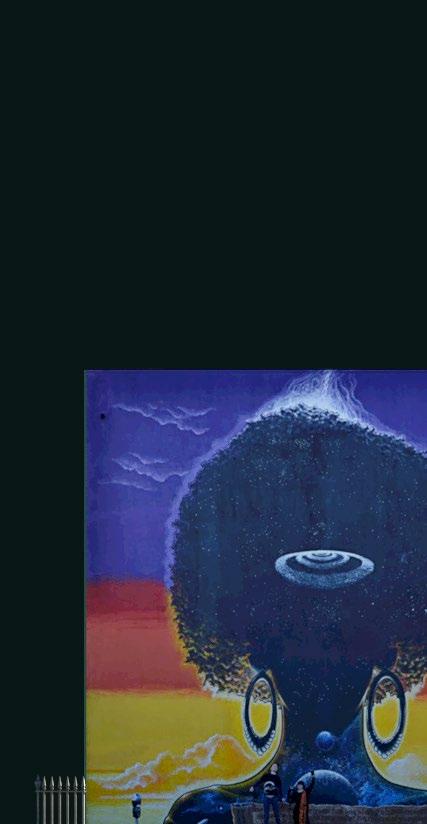
1 minute read
FIRE IN THE BACKYARD
The backyard transforms when it is filled with smoke from a forest fire, the sky changes carpet on the floor and the whole space becomes strangely aesthetic. The colors of the fire the atmosphere and the scene in totality. While some planks get burned and allow for new filled with dead leaves and debris. The scene possesses a potential for the growth of a propagates through the burnt environment.
changes color, leaves form a natural fire and smoke tend to dominate new configuration, the ground is a new type of ecosystem which
Advertisement
The project engages in historical and contemporary thought on the role the architect plays in seeing, sensing, and participating in the urban environment, particularly as it pertains to Black urban space. We focus specifically on a zone of Crenshaw Boulevard in South Central Los Angeles and consider the long history of this area through the lens of race, class, and urban migration. Given the significant development taking place along Crenshaw it is important to consider what it means to participate in shaping this area. The project asks: how can radical imagination be understood as a form of resistance to cultural erasure, and what are the aesthetic practices that may emerge from attending to the place as it is? (Course abstract by instructor Mira Henry)
MAKE IT BIG.
The neighborhood around Crenshaw Boulevard is bustling with talent and yearning for opportunity. Photographic ephemera were collected from the site and composed in a collage. Looking into finer details of what goes into the making of small vinyl stickers to large urban scale billboards, everything became a part of the process of making Crenshaw Graphics. The objects below are taken from site to understand the economy of things and re-render them to make vinyl stickers.
The project started with the design of an opening event of Crenshaw Graphics. The goal was to situate the organization in the context of site, make an inaugural announcement and to call out artists from the neighborhood and other parts of the city. This would initiate a dialogue between art-lovers and the public; and bring employment opportunities for the people in South Los Angeles.










